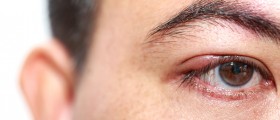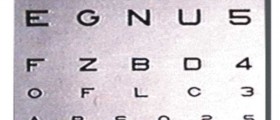
Sarcoidosis is a systemic disease affecting many organs and organ system, with the lungs that are almost always affected by characteristic lesions known as granulomas.
Sarcoidosis Characteristics
The very presence of granulomas is associated with damage to the structure and function of the affected organ. The disease occurs in adult individuals between 20 and 40 years of age.
Many patients suffering from sarcoidosis complain about fatigue, recurrent fever, weight loss and they report the overall feeling of ill health. On the other hand, there are patients who are absolutely asymptomatic. The bottom line is that symptoms and signs are actually not unique and basically depend on the affected organ.
Apart from the lungs, which are affected in almost all cases, sarcoidosis is responsible for damage to the lymph nodes, liver, spleen, brain, nerves, salivary glands, sinuses, bones an joint. Eyes can be also affected by this inflammatory disease.
Sarcoidosis and Eye Problems
It is estimated that around 25-50% of patient suffering from sarcoidosis will eventually develop some eye problem.
The most commonly reported eye condition affecting these patients is uveitis (inflammation of the uvea). It can be in a form of either anterior or posterior uveitis and also occurs as conjunctivitis. Anterior uveitis actually includes inflammation of the uvea in front of the lens, while posterior uveitis represents inflammation of the uvea behind the lens. Uveitis may be accompanied by swelling of the parotid gland or even Bell's palsy. Posterior uveitis is characterized by the presence of inflammatory cells that resemble snowflakes and blurry vision. These cells float inside the vitreous jelly.
Many times patients with sarcoidosis develop granulomas in tear glands. As a result, they end up with dry eyes. The presence of granulomas in lacrimal glands may additionally cause bulging of the eyeball or pushing the eye out or down as well as double vision. Granulomas can also affect the eyelids, and these are quite approachable for performing biopsy.
Conjunctivitis associated with sarcoidosis leads to dry eyes and burning sensation, while the cornea may become cloudy due to the presence of infiltrates. The eyes become red, painful and blurred and there is also light sensitivity. The iris and pupil can be affected by specific infiltrates also known as 'mutton fat' and Koeppa and Busaca.
Such patients are also prone to cataract and glaucoma.
If the retina is affected, there are 'string of pearls' grape-like clusters of material which cover different portions of the organ. Another problem affecting the retina is the formation of tiny new vessels which can easily leak fluid into the macula and cause vision loss.
Finally, certain number of patients will end up with inflammation of the optic nerve and may develop problems with peripheral vision.

















Your thoughts on this
Loading...